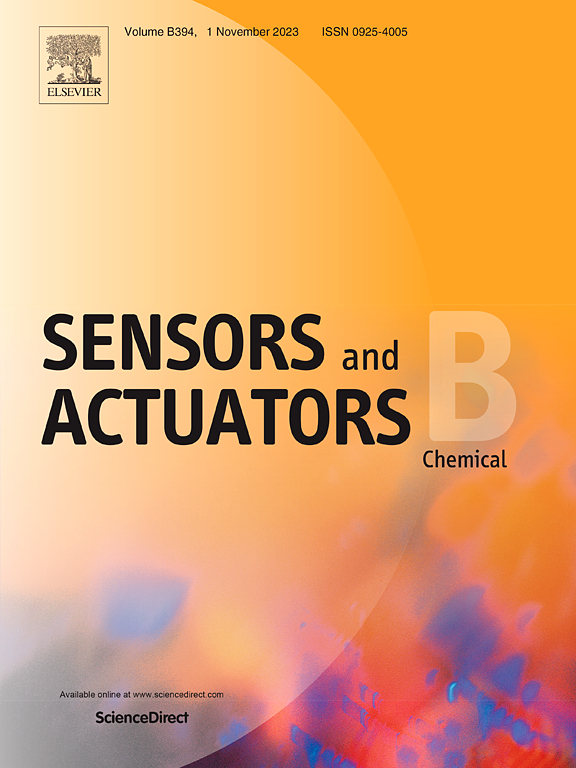In situ construction of heterojunctions between Co3O4 nanonets and Fe2O3 nanospheres for efficient triethylamine detection
IF 8
1区 化学
Q1 CHEMISTRY, ANALYTICAL
引用次数: 0
Abstract
Semiconductor metal oxide (MOS) sensors are extensively utilized for toxic gas detection but are often constrained by high operating temperatures, prolonged detection times, and safety risks in flammable environments. Herein, a MOF-derived Fe2O3/Co3O4 composite with a high specific surface area and abundant oxygen vacancies was synthesized via one-step annealing, achieving in situ p-n heterojunction formation. This innovative structure enabled rapid TEA detection at a low temperature of 110 °C, with a high response of 36.5–50 ppm TEA, which is 4.17 times higher than that of pure Co3O4. The heterojunction facilitated efficient charge separation and transport, while oxygen vacancies and the porous structure improved adsorption kinetics. Theoretical calculations further confirm the strong adsorption energy of the Fe2O3/Co3O4 toward TEA, enabling ultra-fast response and recovery times of 21 s and 33 s, respectively. Compared to the conventional MOS sensors that require high working temperatures, Fe2O3/Co3O4 sensors exhibit a lower temperature of 110 °C, resulting in reduced power consumption and improved potential for microelectronic integration. This work provides a novel, efficient approach for TEA detection, with potential applications in industrial safety and food quality monitoring.

原位构建Co3O4纳米球与Fe2O3纳米球之间的异质结,用于高效检测三乙胺
半导体金属氧化物(MOS)传感器广泛用于有毒气体检测,但往往受到工作温度高、检测时间长和易燃环境安全风险的限制。本文通过一步退火,合成了具有高比表面积和丰富氧空位的mof衍生的Fe2O3/Co3O4复合材料,实现了原位p-n异质结的形成。这种创新的结构能够在110°C的低温下快速检测TEA,具有36.5至50 ppm TEA的高响应,比纯Co3O4高4.17倍。异质结促进了有效的电荷分离和传输,而氧空位和多孔结构改善了吸附动力学。理论计算进一步证实了Fe2O3/Co3O4对TEA的强吸附能,实现了超快的响应和回收时间,分别为21 s和33 s。与需要高工作温度的传统MOS传感器相比,Fe2O3/Co3O4传感器的温度较低,为110°C,从而降低了功耗,提高了微电子集成的潜力。这项工作为TEA检测提供了一种新颖、高效的方法,在工业安全和食品质量监测中具有潜在的应用前景。
本文章由计算机程序翻译,如有差异,请以英文原文为准。
求助全文
约1分钟内获得全文
求助全文
来源期刊

Sensors and Actuators B: Chemical
工程技术-电化学
CiteScore
14.60
自引率
11.90%
发文量
1776
审稿时长
3.2 months
期刊介绍:
Sensors & Actuators, B: Chemical is an international journal focused on the research and development of chemical transducers. It covers chemical sensors and biosensors, chemical actuators, and analytical microsystems. The journal is interdisciplinary, aiming to publish original works showcasing substantial advancements beyond the current state of the art in these fields, with practical applicability to solving meaningful analytical problems. Review articles are accepted by invitation from an Editor of the journal.
 求助内容:
求助内容: 应助结果提醒方式:
应助结果提醒方式:


